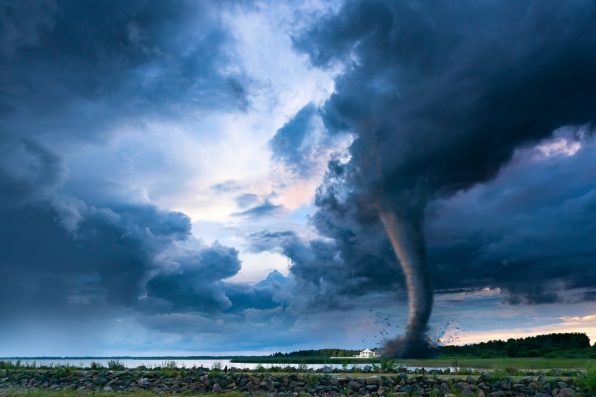Every year, an average of 1,150 tornadoes touch down in the United States. Even when combined, Australia, Canada, and all the countries in Europe don’t come close to that number. In the U.S., the average number of people who die from tornadoes per year is 73, while in Europe, it’s only about 10 to 15 people.
Tornadoes have been recorded in every U.S. state, excluding non-state territories. Every state has experienced at least one tornado. Some states are struck by tornadoes more often than others, though.
Texas has an average of 140 tornadoes per year, which is more than any other state. The top five states with the highest number of tornadoes are Texas, Kansas, Florida, Oklahoma, and Nebraska.
However, more tornadoes do not always mean more fatalities. For instance, Alabama has about 42 tornadoes a year, but it’s ranked highest for tornado fatalities. The time of day and the physical features of an area where a tornado strikes have a big influence on the death toll.
In Southern states, there are more trees and hills than in Plains states like Kansas and Nebraska, where tornadoes can be spotted from miles away. This gives people more time to get to safety.
Additionally, tornadoes in Southern states often travel faster and occur overnight when most people are sleeping, so that can also contribute to higher fatality rates compared to the Plains.
Still, these states do share some things in common. They have the ideal atmospheric conditions for tornadoes to develop.
According to Dr. Harold Brooks, senior scientist at the NOAA’s National Severe Storms Laboratory, severe thunderstorms can turn into tornadoes when warm, moist air is near the ground, while dry, cool air is about 10,000 to 30,000 feet up. Horizontal winds blow from the ground up, which is where the storm forms.
In the U.S., low-pressure systems pull warm, moist air blowing in from the Gulf of Mexico while simultaneously drawing in dry, cool air either from the Rocky Mountains or the High Desert in the southwest. The states situated in between those two regions become tornado-central.

Sign up for Chip Chick’s newsletter and get stories like this delivered to your inbox.


